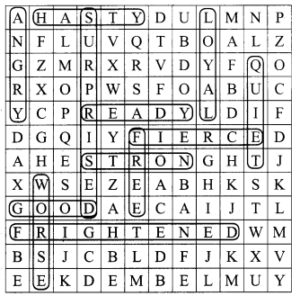Maps Class 6 Questions and Answers Provided helps you to answer complex Questions too easily. You can use them while preparing for board exams and all of them are given by subject experts. Reading NCERT Solutions for Class 6 Social Science Geography Chapter 4 Maps familiarizes you with the kind of questions appearing in the board exams. Students are advised to read these solutions on a regular basis to score well.
Maps Class 6 Questions and Answers Geography Chapter 4
Make your learning experience enjoyable by preparing from the quick links available on this page. Use the Class 6 SST Geography Chapter 4 NCERT Solutions and get to know different concepts involved. All the Solutions are covered as per the latest syllabus guidelines. Knowing the NCERT Class 6 Geography Chapter 4 Questions and Answers helps students to attempt the exam with confidence.
Class 6 Geography Chapter 4 NCERT Textbook Questions and Answers
Question 1.
Answer the following questions briefly.
(a) What are the three components of a map?
(b) What are the four cardinal directions?
(c) What do you mean by the term ‘the scale of the map’?
(d) How are maps more useful than a globe?
(e) Distinguish between a map and a plan.
(f) Which map provides detailed information?
(g) How do symbols help in reading maps?
Answer:
(a) The three components of a map are – distance, direction and symbol.
(b) The four cardinal directions are – North, South, East and West.
(c) Scale of the map is the ratio between the actual distance and the distance on the map.
(d) Map is the representation or a drawing of the Earth surface or a part of it drawn on a flat surface. If we want to study only a part of the Earth such as a continent or a country or states it is useful; it gives more information than a globe. Therefore, it can be said that maps are more useful than a globe.
(e) Differences between a map and a plan:
| Map | Plan |
| With the help of map we can study a part or whole of the Earth. | A plan is a drawing for a small area. |
| It contains huge information. | It gives limited information only related to the area. |
| Symbol use may be or may not be; depending on the nature of map. | It contains symbols. |
| Only needed information is included. | All local information is included. |
(f) Thematic maps or large scales maps provide detailed information.
(g) It is not possible to show and draw the actual shape and size of different features such as railways, buildings, hospitals, schools, temples, well etc. Therefore, for showing the various objects on the map we used symbols. Symbols are easy to draw and read. Many of the symbols are used as per International agreement.
![]()
Question 2.
Tick the correct answers.
(a) Maps showing distribution of forests are:
(i) Physical map
(ii) Thematic map
(iii) Political map
Answer:
(ii) Thematic map
(b) The blue colour is used for showing:
(i) Waterbodies
(ii) Mountains
(iii) Plains
Answer:
(i) Waterbodies
(c) A compass is used:
(i) To show symbols
(ii) To find the main direction
(iii) To measure distance
Answer:
(ii) To find the main direction
(d) A scale is necessary
(i) For a map
(ii) For a sketch
(iii) For symbols
Answer:
(i) For a map
Hope the data shared above regarding the NCERT Class 6 Social Science History Chapter 4 Maps PDF has aided in your exam preparation. If you ever need any assistance you can always reach us and our team will guide you at the soonest possibility.
